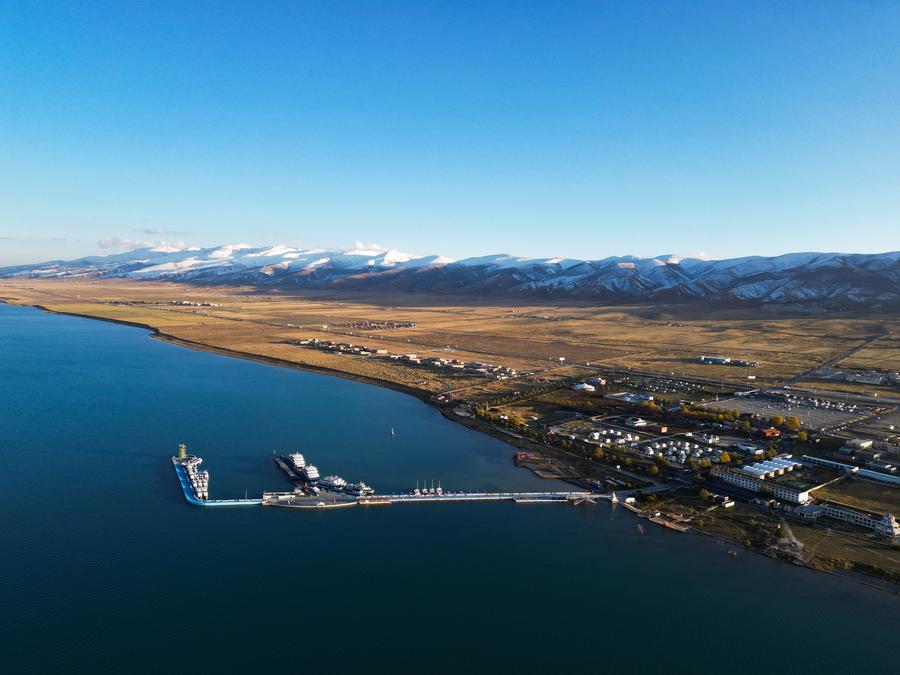Climate change on plateau creating risks for residents, infrastructure


Recent research by Chinese scientists has revealed that over the past 36 years, climate change has had a notable impact on the Qinghai-Tibet Plateau's lakes, which in turn has created risks for the local infrastructure and residents.
The findings were published on Tuesday in the international journal Nature Reviews Earth & Environment by the Institute of Tibetan Plateau Research of the Chinese Academy of Sciences.
The research team discovered that alongside changes in lake water volume, there was a gradual decrease in salinity, a significant reduction in chlorophyll-a levels and enhanced microbial diversity and nutrient status.
"These changes have, in turn, affected local climate and livelihoods, leading to increased regional precipitation and posing risks of lakes overflowing and breaching, which could harm infrastructure, living conditions and pastoral areas," said Ju Jianting, co-lead author of the study and an associate professor at the institute.
This study is the first to systematically quantify the long-term evolution of the physical, chemical and ecological characteristics of lakes on the Qinghai-Tibet Plateau, providing essential scientific evidence for evaluating regional water security and carbon cycling.
The study found that over the past 36 years, the area of the lakes expanded by 26 percent, the water volume increased by about 170 cubic kilometers and water transparency improved by 72 percent.
According to Zhu Liping, corresponding author of the study and a researcher at the institute, the lakes on the Qinghai-Tibet Plateau store about 70 percent of the freshwater resources of the Asian Water Tower, directly influencing the water cycles of major rivers like the Yangtze and Yellow rivers.
From 1986 to 2022, the total area of lakes larger than 1 square kilometer on the plateau increased from 37,000 sq km to 47,000 sq km, with water storage increasing by 169.7 cubic km, equivalent to 3.8 times the maximum capacity of the Three Gorges Reservoir.
"While the expansion of lakes has temporarily improved water quality, it could trigger a series of ecological chain reactions in the long run, potentially threatening infrastructure safety," Zhu said.
The research shows that although rising water temperatures have enhanced phytoplankton activity, the carbon dioxide flux of the lakes has undergone complex changes. During the 2000s the plateau's lakes released 16 gigatons of carbon dioxide into the atmosphere; 68.7 gigatons in the 2010s; and have so far released 11.6 gigatons this decade, with emissions from high-salinity lakes being three times greater than those from freshwater lakes.
"This challenges the traditional understanding that cleaner lakes are not necessarily carbon sinks," Zhu said, explaining that the interchanging roles between temperature and salinity have made the plateau lakes dynamically shift between carbon sources and sinks.
Co-lead author Ju said: "The changes in the plateau lakes are a product of global warming. The exact impact of lake changes on global warming, whether it will result in carbon release or absorption, remains a topic of significant debate requiring further research, enhanced observation and the development of physical balance models."
According to the simulations from an empirical model, if industrial gas emissions such as carbon dioxide remain high, the Qinghai-Tibet Plateau's lake area could grow by an additional 8,000 to 9,000 sq km by 2050, equivalent to 11 times the volume of Qinghai Lake, China's largest lake.
"Although larger lake areas can help regulate local climates through increased precipitation, the ongoing expansion of closed lakes poses two significant risks: overflow and breaching threatening infrastructure such as the Qinghai-Xizang Railway. And chronic salinity reduction could potentially alter existing carbon exchange patterns and exacerbate regional carbon emission fluctuations," Ju noted.
The research team recommended developing clear-physical-mechanism models for lake water balance, improving future prediction accuracy and conducting in situ observations during all seasons. Establishing high-precision remote sensing systems and dynamic monitoring networks for lake-atmosphere carbon exchange is also essential.
As the second Tibetan scientific expedition progresses, researchers are integrating drone aerial surveys with satellite remote sensing, aiming to establish a real-time monitoring system, thereby equipping the Asian Water Tower with an ecological early warning system.
- China launches Lijian 1 Y9 carrier rocket
- First cross-border event debuts at the National Games
- China Focus: National Games enhances coordination under 'one country, two systems'
- China's Fujian aircraft carrier to make regular appearances on high seas: spokesperson
- A decade of dialogues
- HK: a stage for art and cultural dialogue





































